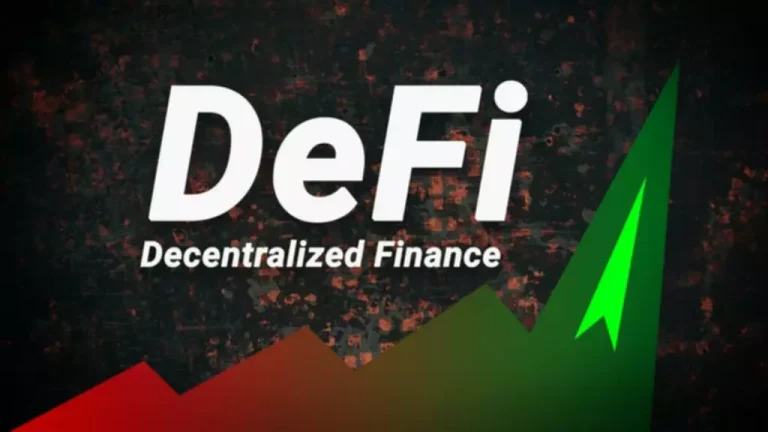Content
The aim is to put you in full control AML Risk Assessments of your own crypto assets, securely and efficiently. SafePal is a one-stop shop for crypto management, and it is known as one of the best self-custody crypto wallets – offering both software and hardware solutions (SafePal S1 and X1). With self-custody, even if a cryptocurrency exchange goes down, your assets are safe and sound because you hold the keys. In a nutshell, crypto self-custody means you store your own cryptocurrencies in a wallet where you, and only you, control the private keys. A qualified custodian not only guards assets but also complies with the relevant laws, regulations, and best practices. Commodity Futures Trading Commission (CFTC), should ensure your custodian has robust security protocols in place to protect digital assets.
Dynamic Personal Experiences: Transform Your Digital Banking Into a Brand Differentiator

The SEC safeguarding rule applies to all assets held for investors, whether crypto or other funds. All assets must be held by a qualified custodian as defined by the Investment Advisers Act of 1940. When you’re weighing which crypto custody solution to choose, first consider your needs. The right option depends on what kind of investor you are, how much you https://www.xcritical.com/ hold and how familiar you are with technology. Crypto custody is a term used to describe the process of securing assets from theft. Custodians – third parties that can be hired to look after your crypto for you – act as safeguards of your money, be it cash, securities, gold bars or virtual assets.
What is a crypto custodian and why is a trustworthy crypto custodian important?
That could see you have total control of your own assets, known as self-custody, or involve a third-party. There are two main categories when securing private keys — hot and cold storage. The crypto custody solution industry has become popular as the crypto industry expands, and it is likely to continue growing as What Is a Crypto Custody more institutions become involved in the crypto space.
- These businesses must be licensed by an approving authority and be qualified custodians under the Investment Advisers Act of 1940.
- By deploying robust, institutional digital asset custody infrastructure, crypto exchanges can overcome these challenges and unlock new revenue models across digital asset use cases.
- Also, last but not least, let’s talk about a practice that’s often overlooked – disaster recovery.
- Key to capturing this market is a highly secure and customizable institutional crypto custody solution.
- The content published on this website is not aimed to give any kind of financial, investment, trading, or any other form of advice.
What Is a Crypto Custody Solution?
Thepaper highlighted 13 practical examples for determining cryptocurrency servicesand ASIC is seeking public feedback on its proposals. For an added layer of security, consider a VPN if that’s allowed in your jurisdiction. A virtual private network masks your IP address and encrypts your internet connection, adding an extra hurdle for would-be attackers. While this won’t make you invincible, it certainly ups the ante for anyone trying to compromise your assets. Despite these challenges, though, the advantages of integrating DeFi services into your self-custody setup are hard to overlook.
Earlier this year, President Biden vetoed a House joint resolution supported by lawmakers of both parties that would have overturned SAB 121. Forcryptocurrency custody, ASIC now requires providers to implement robustsecurity protocols and maintain comprehensive risk management frameworks whendealing with crypto exchanges. Cold storage mandates in countries like Japan and Hong Kong are illustrative of the impact new regulations can have on digital asset custody solutions.
While there are many reasons for why an exchange would prefer to be based in one location over another, most of them boil down to business intricacies, and usually have no effect on the user of the platform. With cyber threats evolving by the minute, staying a step ahead is your best line of defense. Besides, don’t forget that self-custody means you’re the custodian, security guard, and vault manager all rolled into one. As you hold your own keys, you can switch between different DeFi services effortlessly. There’s no need to transfer assets from one centralized platform to another. Now, whether you choose Ledger Nano X or another hardware wallet, many of these steps will be similar.

It’s user-friendly and eliminates the vulnerabilities that come with seed phrases. By the way, it supports cryptocurrencies and NFTs from over 120 blockchains. Now, let’s talk about Zengo, a software wallet that brings innovation to the table with its unique approach to key management. Instead of relying on a seed phrase, it uses multi-party computation to split your private keys across different servers. Just note that once you set up your wallet, you’ll get something called a seed phrase. It’s a series of words that act as a master key to your assets – make sure to store it somewhere super safe and super secret.
The maturation of crypto as an asset class depends on the long-term safety of both personal and institutional funds. Let’s take a look at how different types of cryptocurrency custody work and the pros and cons of each. Long before CEXs, the only way to acquire an asset like BTC was to mine it yourself or through a direct peer-to-peer transfer (facilitated by a payment service like PayPal).
These services cater to a wide range of users by offering user-friendly interfaces and various security features. Individual investors can choose a specialized service with secure key management based on their specific requirements. Multi-signature technology enhances the security in this custody but is not considered essential. It adds an extra layer of protection by requiring multiple private keys to authorize transactions.
Those who do not want to take the responsibility of managing their own accounts or find it too intimidating to deal with the tech might want to turn to a third-party custodian. These are registered, regulated financial institutions that have acquired a state-level or national license to act as a custodian. Consider using a dedicated computer or mobile device solely for your crypto transactions.

Transactionsecurity requirements mandate multi-signature or sharding-based signingapproaches over single private key systems. When it comes to investing in cryptocurrencies like Bitcoin, you’ll often run into the concept “self-custody”. Also known as non-custodial, crypto self-custody is a critical aspect for anyone diving into the world of digital assets. In spite of recent dramatic drops in cryptocurrency prices, there remains significant interest in investing in digital assets. One of the most important concepts to understand with cryptocurrency is how custody of these assets works. In fact, one of the key attributes that distinguishes cryptocurrency is that it is one of the few types of asset you can own directly with no intermediary.
The financial giant has been quietly working behind the scenes on cryptocurrency and blockchain solutions, which may, in time, include crypto custodial services. Another large financial services provider, Fidelity, created its Digital Assets Services for cryptocurrency custody. Within the cryptocurrency ecosystem, very few mainstream banks offer custodian services.
They use advanced encryption techniques, secure key management, and robust infrastructure to protect the private keys. Crypto custody plays a dual role, serving as a robust shield against security threats while fostering trust within the digital asset ecosystem. It’s essential for individuals and institutions who want to store their digital assets securely. The decentralized nature of cryptocurrencies means that users are solely responsible for safeguarding their private keys, which are required to access and transfer their funds.
